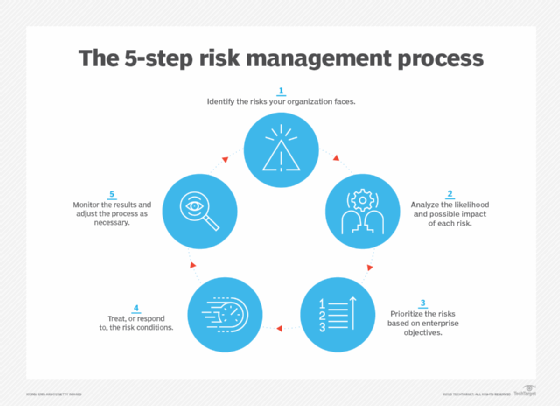Exploring the Growing Importance of Risk Management in Corporate Strategy
Exploring the Growing Importance of Risk Management in Corporate Strategy
Blog Article
Exploring the Value of Risk Management for Effective Decision-Making Approaches
In the elaborate globe of service, Risk Management becomes an important factor in the decision-making process. The capacity to determine prospective risks and chances, and plan appropriately, can lead to the difference in between success and failure. With tools such as SWOT and PESTEL, companies are geared up to make enlightened choices, fostering durability and adaptability in an ever-changing environment. Wondering just how this functions? Allow's unload the dynamics better.
Understanding the Principle of Risk Management
Risk Management, a vital element in decision-making, is typically misunderstood or oversimplified. Normally, it describes the recognition, assessment, and prioritization of risks to lessen, monitor, and control the probability or effect of unfortunate occasions. It's not merely about stopping unfavorable results, however also concerning recognizing potential opportunities. Risk Management includes structured and self-displined strategies, utilizing information and insightful assessments. It needs a thorough understanding of the organization's context, purposes, and the possible threats that might prevent them. From monetary uncertainties, lawful obligations, calculated Management errors, to mishaps and natural calamities, it addresses various risks. Notably, reliable Risk Management is not stationary; it's a constant, progressive procedure that progresses with transforming scenarios.
The Role of Risk Management in Decision-Making Processes
In the realm of calculated planning and organization procedures, Risk Management plays an integral function in decision-making processes. It aids in identifying possible risks and unpredictabilities that can affect the accomplishment of service purposes. By mapping these risks, business can formulate approaches to reduce their effect, ensuring organization connection and security. Risk Management hence ends up being a crucial tool in decision-making, helping leaders to make informed options based upon a thorough understanding of the risks entailed. It encourages an aggressive approach, enabling organizations to prepare and anticipate for feasible future situations. This considerably reduces the likelihood of unfavorable consequences, promoting a lot more efficient and efficient decision-making techniques. Consequently, Risk Management functions as an important component in the decision-making processes of any organization.

Exactly How Risk Management Boosts Strategic Planning
In the context of strategic planning, Risk Management plays a pivotal duty. Initiating with the recognition of potential dangers, it further expands to the application of Risk mitigation measures. The duty of Risk Management is not fixed but vibrant, as it requires consistent surveillance and adjusting of methods.
Identifying Possible Threats

Implementing Risk Reduction
Having developed the relevance of determining possible risks, the next action is to check out Risk reduction. This procedure includes creating and executing techniques to take care of identified dangers effectively. It is a crucial element of calculated preparation as it boosts decision-making by minimizing potential unfavorable end results. Risk mitigation approaches can range from Risk avoidance, Risk transfer, to run the risk of reduction. Each approach must be customized to the specific Risk, considering its prospective impact and the organization's Risk resistance. Effective Risk reduction requires a deep understanding of the Risk landscape and the possible impact of each Risk. This understanding allows companies to prioritize threats and designate websites resources efficiently, guaranteeing that one visit homepage of the most considerable risks are attended to initially.
Surveillance and Changing Techniques
Though Risk reduction is a critical step in tactical planning, continual monitoring and modification of these methods is similarly crucial. It likewise supplies a possibility to examine the success of the Risk Management procedures, enabling changes to be made where needed, further enhancing calculated preparation. Tracking and adjusting Risk Management strategies is a vital part for improving an organization's durability and tactical planning.
Situation Researches: Successful Risk Management and Decision-Making
Worldwide of organization and finance, effective Risk Management and decision-making typically serve as the pillars of thriving enterprises. One such entity is an international oil firm that minimized monetary loss by hedging versus varying oil rates. In an additional instance, a tech startup thrived by identifying and approving risky, high-reward techniques in an unstable market. A worldwide financial institution, confronted with regulative unpredictabilities, effectively browsed the circumstance with positive Risk evaluation and vibrant decision-making. These situations highlight the value of sharp Risk Management in decision-making procedures. It is not the absence of Risk, yet the Management of it, that often differentiates effective business from not successful ones. These instances highlight the essential role of Risk Management in tactical decision-making. importance of risk management.
Devices and Techniques for Effective Risk Management
These tools, such as Risk signs up and warm maps, aid in identifying and assessing possible dangers. Risk action strategies, a crucial component of Risk Management, include approving, staying clear of, moving, or mitigating risks. With these techniques and devices, decision-makers can navigate the facility landscape of Risk Management, therefore promoting notified and efficient decision-making.
Future Fads in Risk Management and Decision-Making Methods
As we discover the huge landscape of Risk Management, it ends up you could try this out being evident that the tools and strategies utilized today will proceed to evolve. The concept of Risk society, where every member of an organization is aware and included in Risk Management, will certainly acquire more importance. These trends advertise an even more proactive and inclusive technique in the direction of Risk Management and decision-making.
Conclusion

Risk Management therefore ends up being a vital tool in decision-making, aiding leaders to make enlightened options based on a comprehensive understanding of the threats involved. Risk mitigation techniques can vary from Risk avoidance, Risk transfer, to risk reduction (importance of risk management). Effective Risk reduction needs a deep understanding of the Risk landscape and the potential impact of each Risk. Risk action techniques, a vital element of Risk Management, entail approving, avoiding, moving, or mitigating threats. The concept of Risk culture, where every participant of an organization is conscious and entailed in Risk Management, will obtain a lot more prestige
Report this page